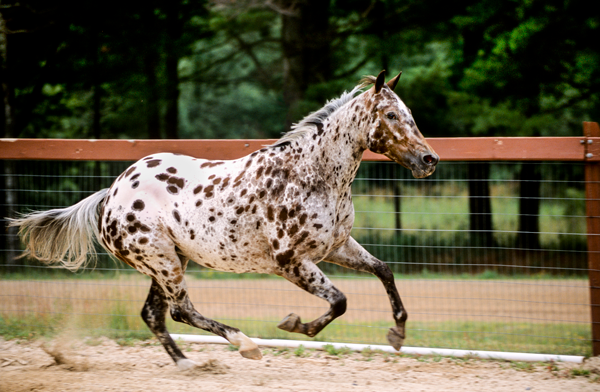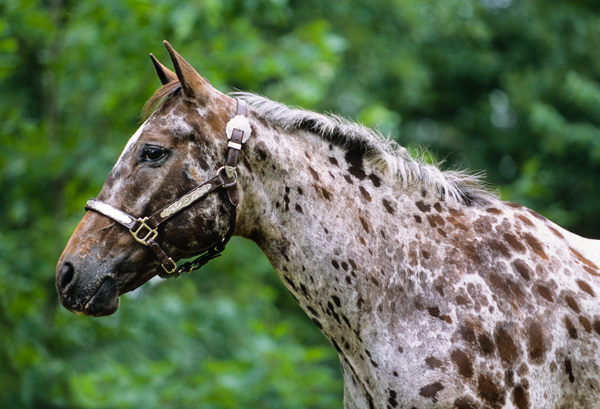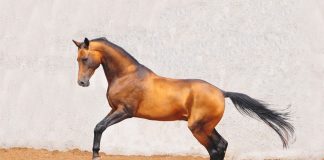
You’re sitting in the shade at a horse show watching a western pleasure class, when your friend points to a spotted equine and says: “Hey, look at that cute Appaloosa over there!” You look—but it’s too small to be an Appaloosa. “No,” you say, “it’s the size of a pony.” And it’s true—he looks like a pony-sized Appaloosa. So what’s going on here? Surprise! In a way, you and your friend are both correct, because you’ve just seen a Pony Of the Americas, or POA.
A Stock-Type Pony
 You’re probably familiar with the concept that some horse breeds represent a western or stock-type build, as opposed to English or draft-type breeds. The POA tends to show pony-type characteristics in its head and face, but it’s also a definite stock-type pony, with a build and overall appearance comparable to other stock-type breeds like Quarter Horses, American Paint Horses, and Appaloosas.
You’re probably familiar with the concept that some horse breeds represent a western or stock-type build, as opposed to English or draft-type breeds. The POA tends to show pony-type characteristics in its head and face, but it’s also a definite stock-type pony, with a build and overall appearance comparable to other stock-type breeds like Quarter Horses, American Paint Horses, and Appaloosas.
POAs tend to possess quiet, steady temperaments that can help give confidence to young riders. Standing between 11.2 and 14 hands, the POA’s smaller size makes it an excellent choice for children just getting into horses—or for experienced riders as well. The POA is well-known for its suitability for western disciplines, including classics like western pleasure and game classes like pole bending and barrels.

Thanks to the POA’s natural athleticism and versatility, these ponies can also excel as trail riding mounts, and you’ll even find some riders taking their POAs into hunter classes on the flat or over fences. Adults sometimes use the ponies as driving animals to pull a small cart. People of any age can enjoy the companionship of a POA.
And don’t forget the most fun attribute of these ponies: their color patterns!
Seeing Spots with the Pony Of the Americas
Because of their Appaloosa heritage, POAs display the same types of coat patterns as their horse-sized counterparts. In fact, POAs must be spotted in some way in order to qualify for registration. Not only that, but the spots need to be large enough to be seen at a distance of 40 feet—a tiny speck made of only a few hairs probably won’t count as a spot.
You’ll find that POAs may sport a number of interesting coat patterns, including leopard (a white base with dark spots, like a Dalmatian), spotted blanket (with the white area and spots confined to the hindquarters), and solid blanket or snow-capped (like a spotted blanket minus the spots).
Even the skin around the eyes and face of a POA can show spotting, called “mottling.” You might also see POAs with white sclera (the ring around the eyes). Black-and-white striping on the hooves is a common characteristic of the breed as well.
There’s a lot to know about POA coat patterns, and it’s fascinating to study your favorites!
Learn MoreIf you’re interested in learning more, the Pony Of the Americas Club, Inc. website has plenty of useful information, history, and resources for anyone who wants to explore this fun and versatile breed. Next time, you’ll know what you’re looking at when you “spot” a POA at a horse show! Visit www.poac.org |
This article about Pony Of the Americas appeared in the November/December 2019 issue of Young Rider magazine. Click here to subscribe!





